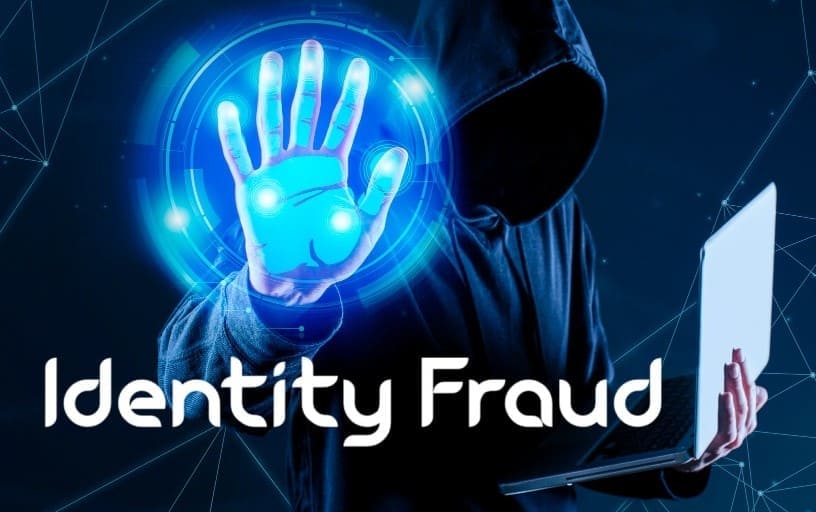
Overview:
Identity fraud is a growing concern in our digital age, involving the misuse of someone’s personal information to commit financial or other forms of crime. As technology advances and personal data becomes more accessible online, criminals find new ways to exploit this information for illicit gains. Identity fraud can manifest in various ways, from unauthorized credit card transactions to the creation of fake documents, and its consequences can be severe, affecting individuals’ financial stability and personal security.
Understanding what is identity fraud is crucial for effectively protecting yourself and recovering from potential breaches. This article explores the different types of identity fraud, the signs that may indicate a problem, and practical steps you can take to prevent and address this issue. By staying informed and proactive, you can better safeguard your personal information and mitigate the risks associated with identity theft.
Contents:
- What is Identify Fraud
- How Identity Fraud is different from Identity Theft
- How Identity Frauds are done
- What are the first signs of an Identity Fraud
- How to prevent Identity Frauds
- How to recover from Identity Fraud
- Summing Up
So, what is Identity Fraud:
Identity fraud involves the illegal use of someone else’s personal information to deceive or commit a crime. This often includes using stolen details such as Social Security numbers, credit card numbers, or other personal identifiers to gain financial benefits, open new accounts, or engage in other fraudulent activities.
How Identity Fraud is different from Identity Theft:
Identity fraud and identity theft are closely related terms, but they refer to different aspects of misuse of personal information:
Identity Theft:
This is the act of obtaining someone else’s personal information without their consent. This information might include Social Security numbers, credit card details, or other identifying data. The primary goal is to gain access to that person’s financial resources or commit other forms of fraud. Identity theft is the initial act of stealing someone’s identity.
Key types of Identity Theft:
1. Financial Identity Theft:
Credit Card Theft: Stealing someone’s credit card details and using them for unauthorized purchases.
Bank Account Theft: Gaining access to someone’s bank account to withdraw money or make unauthorized transactions.
Loan Fraud: Taking out loans in someone else’s name using their stolen personal information.
2. Medical Identity Theft:
Medical Insurance Fraud: Using someone’s health insurance information to obtain medical services or prescriptions.
Medical Records Theft: Accessing and using someone’s medical records to commit fraud or for other illegal purposes.
3. Social Security Identity Theft:
Benefits Fraud: Using someone’s Social Security number to apply for government benefits or services.
Employment Fraud: Using a stolen Social Security number to secure employment, leading to tax and benefit complications.
4. Criminal Identity Theft:
False Arrest Records: Using someone else’s identity when arrested, leading to a criminal record in the victim’s name.
Fake Identification: Creating fake IDs using stolen personal information for illegal activities.
5. Synthetic Identity Theft:
Creating New Identities: Combining real and fake information to create a new identity, which is then used to commit various types of fraud.
Identity Fraud:
This occurs when stolen personal information is used to commit a crime. It encompasses various activities where the thief uses the stolen identity to make unauthorized purchases, open accounts, take out loans, or engage in other illegal activities. Identity fraud is the misuse of the stolen identity to commit fraud.
Types of Identity Fraud:
1. Credit Card Fraud:
Online Purchases: Using stolen credit card details to make online transactions.
Card Not Present Fraud: Using stolen card information to make purchases where the physical card is not required.
2. Bank Fraud:
Account Takeover: Gaining access to someone’s bank account to make unauthorized transactions or change account details.
Check Fraud: Using stolen or forged checks to withdraw funds from someone else’s account.
3. Loan Fraud:
Mortgage Fraud: Using stolen identity information to apply for and obtain a mortgage loan.
Personal Loan Fraud: Taking out personal loans in someone else’s name and not repaying them.
4. Employment Fraud:
Falsified Employment: Using stolen personal information to apply for jobs and receive wages in the victim’s name.
Unemployment Benefits Fraud: Using stolen identity information to claim unemployment benefits.
5. Tax Fraud:
Filing False Returns: Using stolen identity information to file tax returns and claim refunds.
Tax Refund Fraud: Using stolen information to receive tax refunds fraudulently.
6. Insurance Fraud:
Policy Fraud: Using stolen identity information to obtain insurance policies and make fraudulent claims.
Claim Fraud: Using someone else’s identity to make false insurance claims.
How Identity Frauds are done:
Identity fraud is carried out using various methods and techniques. Here are some common ways in which identity fraud is perpetrated.
1. Phishing and Social Engineering:
Phishing Emails: Fraudsters send deceptive emails that appear to be from legitimate organizations (e.g., banks, tech companies) asking for sensitive information like login credentials or credit card numbers.
Social Engineering: Scammers manipulate individuals into divulging personal information by pretending to be trusted figures or organizations. This can include phone calls, emails, or even in-person interactions.
2. Data Breaches and Hacking:
Database Breaches: Hackers gain unauthorized access to a company’s database, stealing large amounts of personal data (e.g., Social Security numbers, credit card details).
Malware: Malicious software installed on a victim’s device can capture keystrokes, steal login information, or access sensitive files.
3. Skimming and Card Cloning:
Skimming Devices: Fraudsters attach small devices to ATMs or point-of-sale terminals to capture card information when users swipe their cards.
Card Cloning: Using stolen card data, fraudsters create duplicate cards and use them for unauthorized transactions.
4. Identity Theft for Financial Gain:
Opening Accounts: Using stolen personal information to open new bank accounts, credit cards, or loans, and then using these accounts to make fraudulent transactions.
Applying for Loans: Using someone else’s identity to obtain loans, mortgages, or other financial products, and then disappearing with the funds.
5. Social Media and Public Information:
Social Media Mining: Scammers gather personal information from social media profiles to craft convincing phishing attempts or answer security questions.
Public Records: Accessing public records such as voter registration or property records to obtain personal information.
6. Fake Documentation:
Forgery: Creating fake IDs, passports, or other documents using stolen personal information to commit fraud.
Counterfeit Checks: Using stolen information to create and cash counterfeit checks.
7. Account Takeover:
Credential Stuffing: Using stolen login credentials from one site to gain access to other accounts, assuming users reuse passwords across sites.
Session Hijacking: Taking control of an active online session to gain unauthorized access to accounts.
8. Medical and Insurance Fraud:
Medical Identity Theft: Using someone else’s health insurance details to receive medical services or prescriptions.
Insurance Fraud: Using stolen identity information to obtain insurance policies and make fraudulent claims.
9. Tax Fraud:
False Tax Returns: Filing tax returns using stolen personal information to claim refunds fraudulently.
Unemployment Benefits Fraud: Applying for unemployment benefits in someone else’s name.
What are the first signs of an Identity Fraud:
Detecting the first signs of identity fraud early can help you address the issue quickly and minimize potential damage. Here are some common early indicators of identity fraud.
1. Unfamiliar Transactions:
Unexpected Charges: Unusual or unauthorized charges on your credit card or bank statements that you don’t recognize.
Unknown Accounts: Seeing unfamiliar accounts or loans opened in your name on your credit report.
2. Suspicious Mail:
Unsolicited Bills or Statements: Receiving bills, account statements, or credit card offers for accounts you did not open.
Collection Notices: Getting collection notices or calls for debts that you did not incur.
3. Changes in Credit Reports:
Errors in Credit Reports: Incorrect or unfamiliar information on your credit report, such as accounts you did not open or addresses you have not lived at.
Credit Report Inquiries: Notices of inquiries on your credit report from companies you did not contact or apply to.
4. Alerts and Notifications:
Fraud Alerts: Receiving alerts or notifications from your bank, credit card issuer, or credit monitoring services about suspicious activities.
Security Alerts: Emails or messages from financial institutions about changes to your account or unusual login attempts.
5. Issues with Existing Accounts:
Failed Transactions: Difficulty accessing your accounts or noticing that transactions are being declined for insufficient funds when you have sufficient balances.
Account Lockouts: Being locked out of your online accounts due to incorrect login attempts or changes you didn’t make.
6. Problems with Tax Filing:
Rejected Tax Returns: Receiving a notice that your tax return has been rejected because a return was already filed using your Social Security number.
IRS Notifications: Unusual notices from the IRS about suspicious activity or incorrect information on your tax returns.
7. Unexpected Employment Issues:
Wage Garnishments: Discovering wage garnishments or employment-related issues that you did not authorize.
Unemployment Claims: Receiving notices or benefits related to unemployment claims that you did not file.
8. Public Records and Legal Notices:
Court Summons: Receiving legal documents or court summons for debts or actions you did not undertake.
Incorrect Public Records: Finding incorrect or unfamiliar information in public records, such as property records or court filings.
9. Notifications from Credit Bureaus:
Credit Monitoring Alerts: Alerts from credit monitoring services about changes to your credit report or potential identity theft.
Fraud Alerts: Notifications from credit bureaus indicating that someone may be trying to open accounts in your name.
10. Unusual Communication:
Calls from Collection Agencies: Receiving calls from collection agencies about debts you do not recognize.
Scam Phone Calls: Receiving phone calls from scammers claiming to be from banks or other institutions asking for personal information.
How to prevent Identity Frauds:
Preventing identity fraud involves a combination of vigilance, proactive measures, and secure practices. Here are some effective strategies to help protect yourself.
1. Protect Personal Information:
Shred Sensitive Documents: Shred old bank statements, credit card offers, and other documents containing personal information before disposing of them.
Secure Personal Data: Avoid sharing sensitive information (like Social Security numbers) unless absolutely necessary and ensure the recipient is legitimate.
2. Use Strong Passwords and Authentication:
Create Strong Passwords: Use complex, unique passwords for each online account, combining letters, numbers, and special characters.
Enable Two-Factor Authentication (2FA): Add an extra layer of security by requiring a second form of verification (like a text message or authentication app) in addition to your password.
3. Monitor Financial Accounts Regularly:
Check Statements: Regularly review bank and credit card statements for unauthorized transactions or discrepancies.
Use Alerts: Set up account alerts for unusual activities, such as large transactions or changes to account settings.
4. Be Cautious Online:
Avoid Phishing Scams: Be skeptical of unsolicited emails, messages, or phone calls asking for personal information. Verify the sender’s identity before providing any details.
Secure Your Devices: Install antivirus software, keep your operating system up to date, and use firewalls to protect against malware and hacking attempts.
5. Protect Personal Information Online:
Use Secure Websites: Ensure websites are secure (look for “https” in the URL) before entering sensitive information.
Limit Social Media Sharing: Be cautious about sharing personal details on social media that could be used to guess passwords or security questions.
6. Monitor Your Credit:
Check Your Credit Reports: Regularly review your credit reports for any unauthorized accounts or activities. You can request a free credit report annually from each of the major credit bureaus (Equifax, Experian, and TransUnion).
Place a Fraud Alert: If you suspect you’re a victim of identity theft, you can request a fraud alert on your credit report, which notifies creditors to verify your identity before extending credit.
7. Secure Your Mail:
Use a Locking Mailbox: Protect your mail from theft by using a secure mailbox or a locking mailbox.
Retrieve Mail Promptly: Don’t let mail sit in your mailbox for extended periods.
8. Be Careful with Public Wi-Fi:
Avoid Public Wi-Fi for Sensitive Transactions: Avoid accessing sensitive information or conducting financial transactions over unsecured public Wi-Fi networks.
Use a VPN: If you need to use public Wi-Fi, consider using a Virtual Private Network (VPN) to encrypt your internet connection and protect your data.
9. Keep Your Information Safe:
Secure Your Devices: Use passwords, PINs, or biometric authentication to lock your devices (smartphones, tablets, laptops).
Backup Data: Regularly back up important data to protect against loss or theft.
10. Report Suspicious Activity:
Report Identity Theft: If you suspect your identity has been stolen, report it immediately to the Federal Trade Commission (FTC), credit bureaus, and relevant financial institutions.
File a Police Report: For serious cases of identity theft, filing a police report can help document the crime and assist in resolving it.
How to recover from Identity Fraud:
Recovering from identity fraud can be a complex and time-consuming process, but taking prompt and systematic steps can help restore your identity and minimize the damage. Here’s a comprehensive guide on how to recover from identity fraud.
1. Act Quickly:
Report the Fraud: As soon as you detect identity fraud, report it to the relevant institutions. This includes your bank, credit card companies, and any other affected financial institutions.
Place a Fraud Alert: Contact one of the major credit bureaus (Equifax, Experian, or TransUnion) to place a fraud alert on your credit report. This will warn creditors to take extra steps to verify your identity before issuing credit.
2. Review and Freeze Your Credit Reports:
Obtain Your Credit Reports: Request free copies of your credit reports from the three major credit bureaus. Review them carefully for any unauthorized accounts or transactions.
Place a Credit Freeze: Consider placing a credit freeze with each of the credit bureaus. This prevents new creditors from accessing your credit report and opening new accounts in your name.
3. Contact Authorities and Institutions:
File a Police Report: Report the identity theft to your local police department. Provide them with details and documentation of the fraud. Obtain a copy of the police report, as it may be required by creditors or for insurance purposes.
Notify the Federal Trade Commission (FTC): File a report with the FTC at IdentityTheft.gov. The FTC provides a recovery plan and can assist with steps to take.
4. Work with Creditors and Financial Institutions:
Dispute Fraudulent Transactions: Contact the financial institutions where fraudulent transactions occurred and dispute them. Provide any required documentation, such as a police report or FTC report.
Close or Freeze Affected Accounts: Work with your bank or credit card companies to close or freeze any accounts that have been compromised.
5. Secure Your Personal Information:
Update Passwords: Change passwords for online accounts, using strong, unique passwords for each account. Enable two-factor authentication (2FA) where possible.
Monitor Accounts: Keep a close eye on your bank accounts, credit card statements, and other financial documents for any signs of further fraudulent activity.
6. Address Tax and Employment Issues:
Review Tax Returns: Ensure that your tax returns have not been falsely filed. Contact the IRS if you suspect any issues.
Correct Employment Records: If the fraud involves employment, work with the IRS or other relevant agencies to correct any employment records affected by identity theft.
7. Follow Up and Stay Vigilant:
Check Credit Reports Regularly: Continue to monitor your credit reports periodically to ensure no new fraudulent activity occurs.
Update Your Information: Ensure that any incorrect information on your credit report is corrected and that your records are up-to-date.
8. Seek Professional Help:
Consider Identity Theft Protection Services: These services can offer ongoing monitoring and recovery assistance.
Consult with Legal or Financial Advisors: If the fraud is extensive, professional advice may be necessary to navigate complex situations and ensure that all legal and financial issues are addressed.
9. Educate Yourself:
Learn about Identity Theft Prevention: Understanding how identity theft occurs and how to protect yourself can help prevent future incidents.
Stay Informed: Keep up-to-date with the latest security practices and fraud prevention tips.
Summing Up:
Identity fraud is a serious crime where an individual’s personal information is stolen and misused for financial gain or other illicit activities. It encompasses various forms of fraudulent activities, including unauthorized credit card transactions, account takeovers, and falsified documents. Recognizing the signs of identity fraud early—such as unfamiliar charges, suspicious mail, or unexpected changes in credit reports—is crucial for mitigating its impact.
To prevent identity fraud, individuals should protect their personal information, use strong passwords, monitor their financial accounts regularly, and be cautious online. If fraud occurs, it’s important to act quickly by reporting the issue, reviewing credit reports, and working with financial institutions and authorities to resolve the situation. By remaining vigilant and proactive, individuals can reduce their risk of falling victim to identity fraud and take the necessary steps to recover and restore their identity if necessary.
Courtesy Image: FreePik











